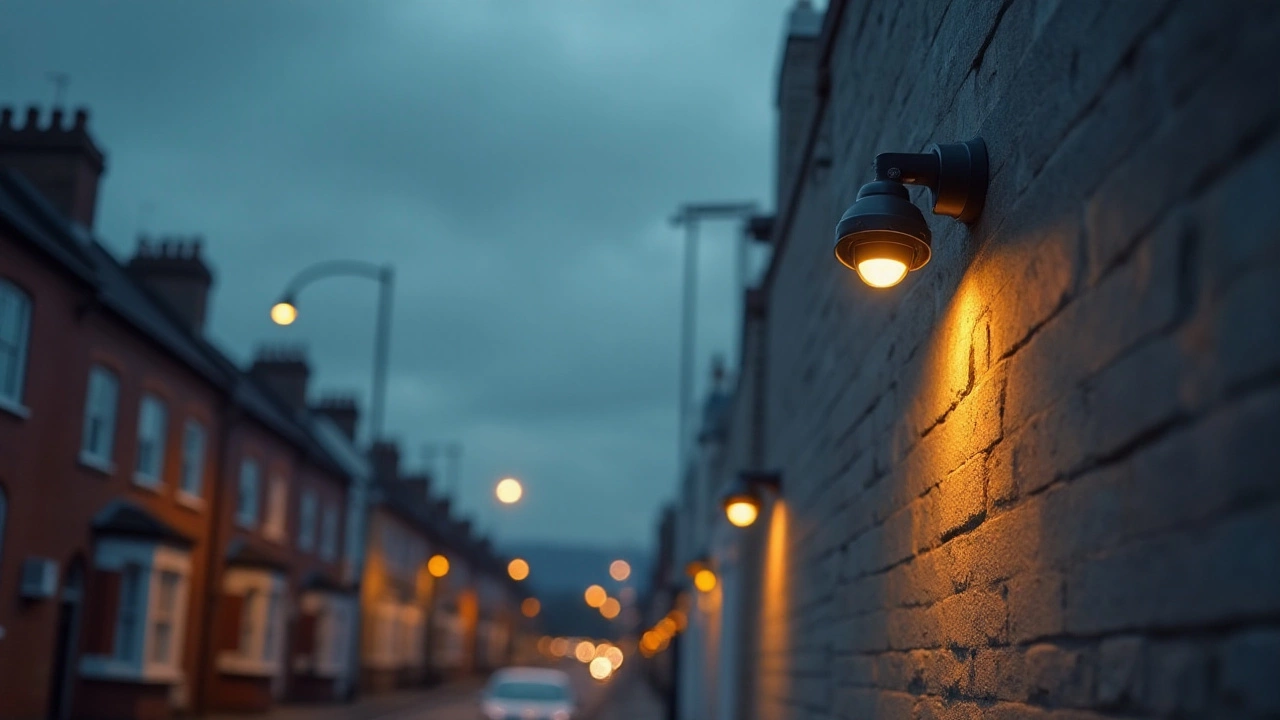When you shop for security cameras, color is one of the first things you notice. A black or white body isn’t just about looks – it can affect how visible the camera is, how it blends with the surroundings, and even how people perceive your security level. Below we break down the main factors to help you pick the best shade for your setup.
Most burglars scan a property quickly. A bright white camera standing out in a dark yard can act like a warning sign, telling a thief “I’m being watched.” On the other hand, a matte black camera can hide in a tree line or on a dark wall, making it harder for a suspect to spot and avoid. Choose the color that matches what you want – a bold deterrent or a discreet observer.
Think about where the camera will sit. If you’re mounting it on a light‑colored façade, a white housing will blend in and look less intrusive. For a brick or concrete wall, black or dark grey usually looks cleaner. Outdoor camouflaged models with camouflage patterns can disappear among shrubs, but they’re pricier and harder to find. Simple is best: pick a color that matches the most common background near the mount point.
Another tip is to consider the lighting. Cameras with a glossy finish can reflect sunlight or streetlights, creating glare that hurts image quality. Matte finishes reduce glare and keep the lens clear, especially in sunny spots. If you install a camera under a porch roof, a matte black or dark gray model is often the safest bet.
Don’t forget the interior cameras. In living rooms or hallways, a sleek white or brushed metal look can blend with furniture and keep the tech from looking out of place. A bright color inside a dark basement might actually improve visibility on the camera itself, letting you see it during routine checks.
Security does not end at the lens – the housing can affect durability. Some manufacturers coat black cameras with UV‑resistant paint that lasts longer outdoors. White cameras can fade faster under harsh sunlight, turning yellow and looking old quickly. Check the product specs for UV protection if you’re buying a light‑colored model.
If you’re using multiple cameras, aim for consistency. A mix of black and white units can look messy and may give away which camera is which if one fails. Uniform color makes it easier to manage inventory and gives a professional look across the property.
Finally, think about resale value. A property with a clean, uniform security system often feels more polished to potential buyers. When you choose a neutral color like black, white, or gray, you avoid a quirky look that might turn people off.
Bottom line: pick the shade that best fits the camera’s location, the visual impact you want, and the durability you need. Whether you go bold with white for a deterrent effect or stay low‑key with matte black, the right color helps the camera do its job without drawing unnecessary attention.

When selecting a security camera for night vision, the color of the camera not only affects aesthetics but also its functionality and visibility. This article explores why the color choice matters, considering factors such as environmental blending, thermal regulation, and nighttime visibility. Understanding these factors can help you make an informed decision for effective surveillance. Learn how to match your camera's color with your surroundings to enhance security.